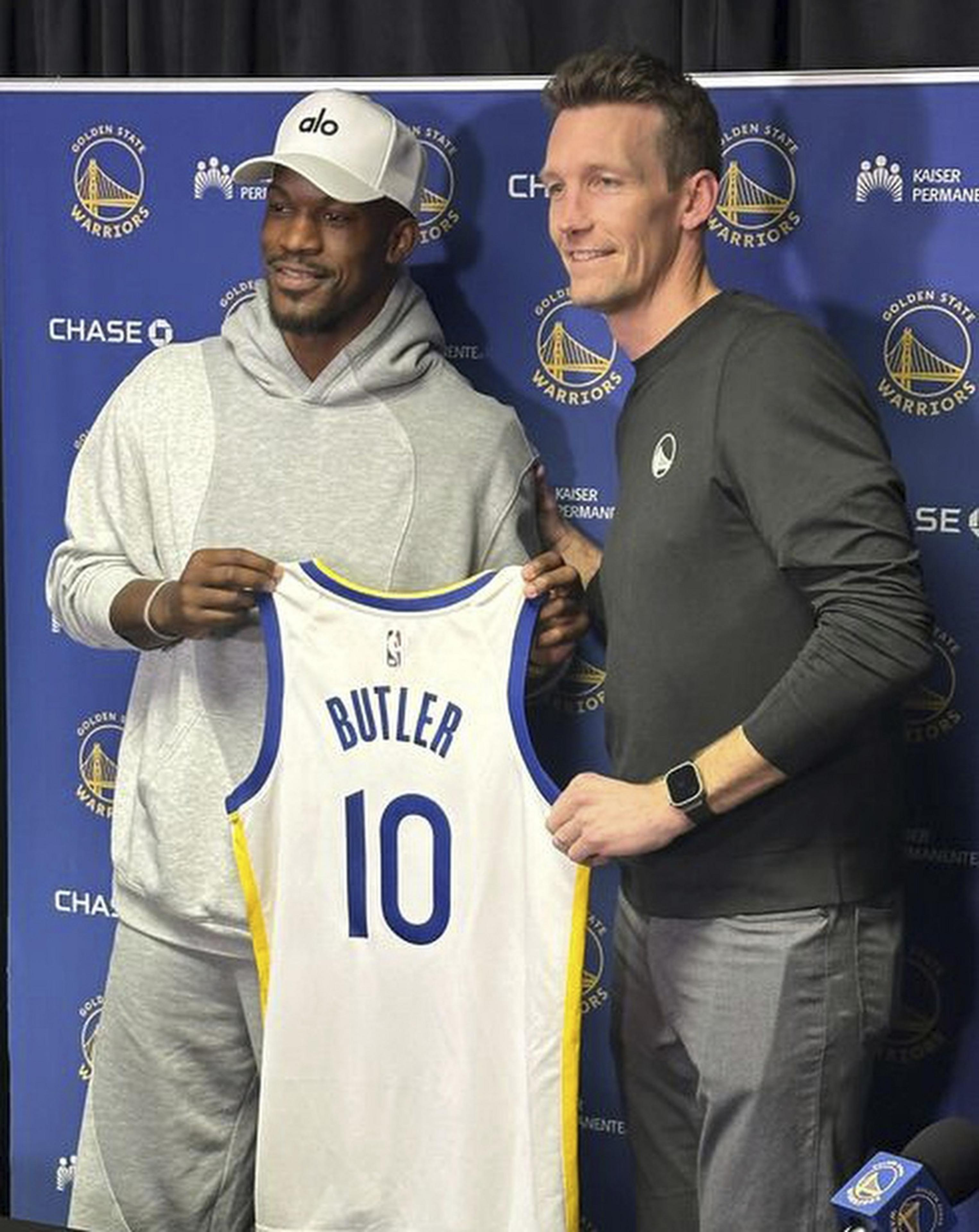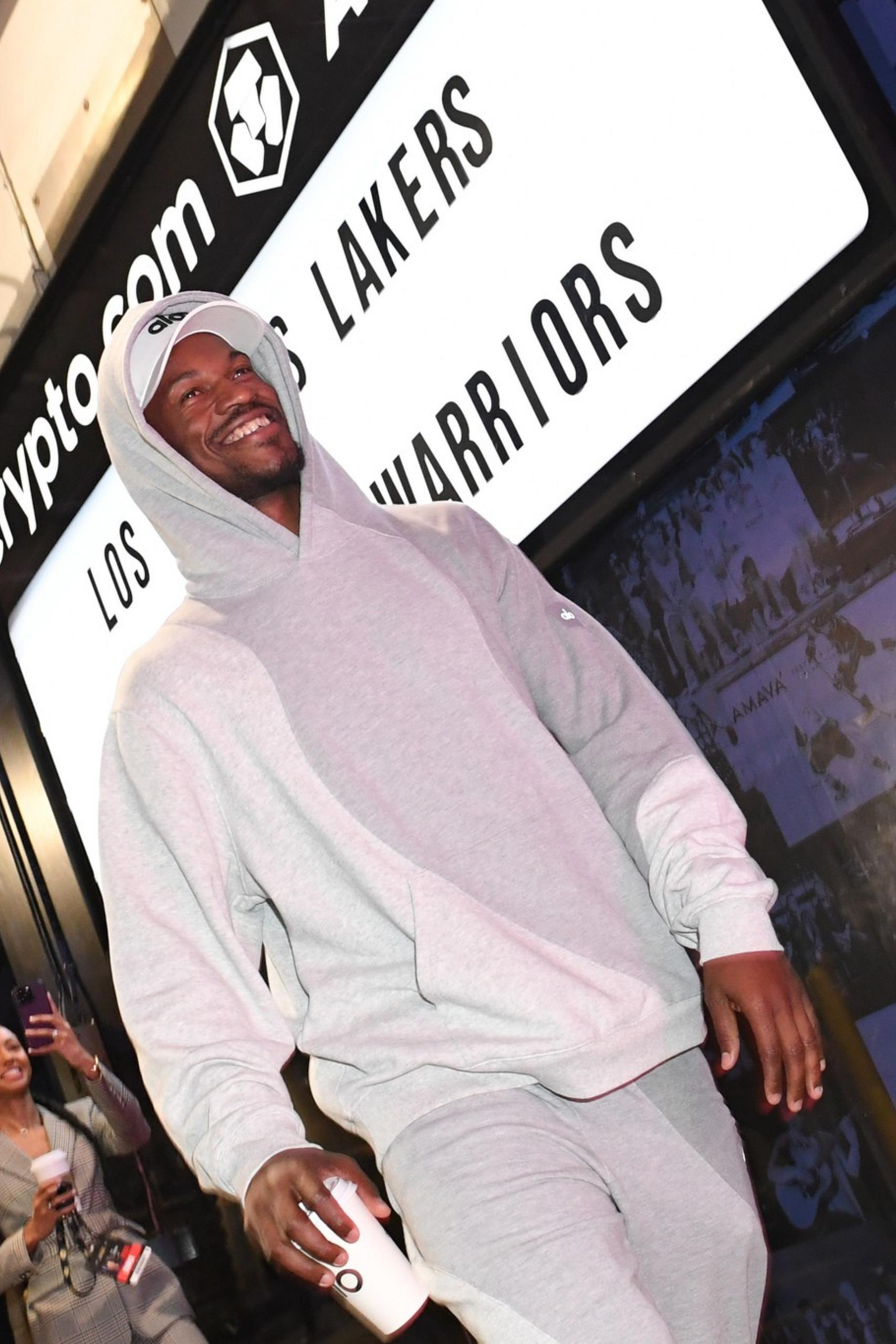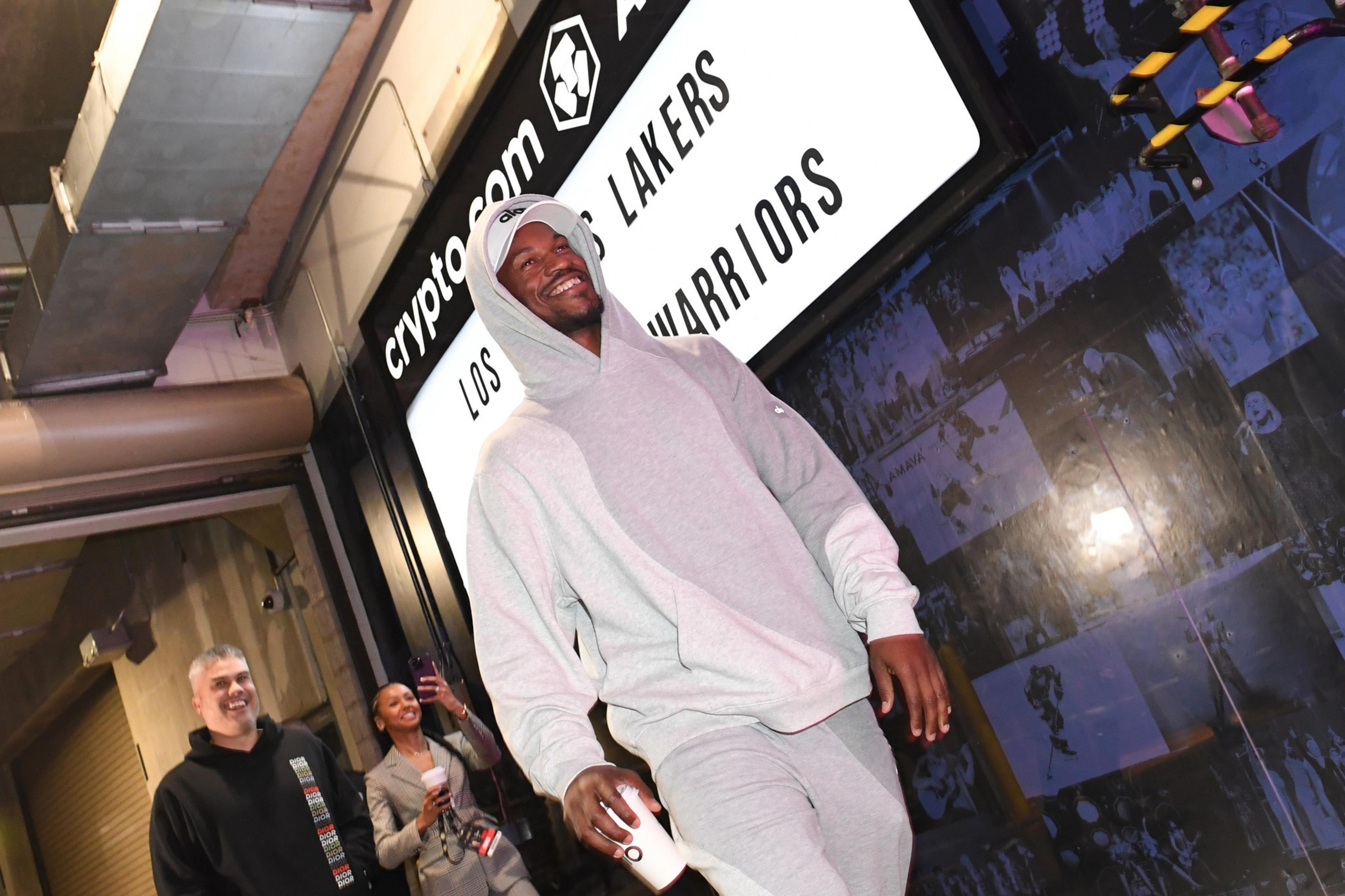The Warriors had options this week after toiling long and hard to put a deal together to reacquire Kevin Durant, before finding out that Durant didn’t want a sequel to his first Warriors tenure.
They had the Jimmy Butler deal, which, according to an NBA source, had been put together and was sitting on the table for the Warriors as they explored the Durant deal. Once they decided they wouldn’t trade for an unhappy Durant, as first reported by ESPN and The Athletic, they moved quickly to the multi-team deal for Butler, which included giving him a two-year, $112 million extension beyond this season and sending away four players plus their first-round pick this year (protected 1-10).
Even after sacrificing a lot of chips for an often-disgruntled 35-year-old playoff star, I’m told that the Warriors remain confident that they have maintained far more flexibility than many of their rivals to make another big move either next offseason or at next year’s trade deadline.
They still have their first-round picks in 2026, 2027, 2028, 2029, and 2031. (Note: The 2025 protected pick sent to Miami likely will be conveyed because the Warriors should be good enough to stay out of the 1-10 slots. But if they do land in the top 10, the owed pick will transfer to 2026, also protected 1-10. If it still isn’t conveyed, it will be unprotected in 2027. For the purposes of this column, let’s presume the pick falls out of the protection and is used by the Heat in June. That would free up the Warriors to trade their 2026 pick immediately after the June draft.)
Meanwhile, the Lakers have no first-round picks to trade outright in the next six seasons — their only flexibility is possibly swapping their first-rounders in 2026 and 2028. The Clippers have only one pick to trade through 2031. The Suns can only trade their first-rounder in either 2028, 2029, or 2030.
So if some superstar in the near future has a trade-preference list that includes the Lakers, Clippers, Suns, and Warriors … just remember the pick situation. I’ll get back to more factors in a bit.
But first, of course, trading away Andrew Wiggins, Kyle Anderson, Dennis Schroder, Lindy Waters, and the draft pick was a move made for right now — specifically, to match Stephen Curry with the star partner he’s been missing for years and to give the Warriors a combination-puncher’s shot in any seven-game series.
To do this, the Warriors gave up a very valuable asset (the protected pick), a very practical piece of salary ballast (Wiggins), and a huge chunk of change to placate Butler. And the Warriors still seem a player short of vying with the Thunder at the top of the Western Conference — and that’s even if Butler remains focused, if the Warriors’ spacing issues don’t continue to hamper the entire offense, if Curry stays healthy, and if the Warriors look a whole lot more put together than they have for most of the last two months.
But the Warriors are more dangerous now with Butler than they were two days ago without him, and they got here without ransacking 99% of their trade capital to do it. Basically, the Warriors kept Jonathan Kuminga and any future picks beyond this coming draft out of the deal.

So the Warriors still have options. They can play it out multiple ways. None of this guarantees anything — not even a top-six seed in the West. But they have set themselves up for some interesting pathways. They will see how far Curry, Butler, and Draymond take them the rest of this season. They don’t have to worry that Butler will quit on the team (at least for a little while) because they’ve already extended him. They can evaluate how Kuminga does once he’s back from his ankle injury and possibly through his first playoff run in the main rotation.
Then in the offseason, with Kuminga hitting restricted free agency, the Warriors can either re-sign him or try to package him in a sign-and-trade for a star. And there’s some lingering intrigue about Kuminga after the deadline because he was likely one of the key pieces in their offer to Phoenix for Durant. They also still have Brandin Podziemski, Moses Moody, and Trayce Jackson-Davis — who can fill important roles or add value to trade offers.
Again, remember this for later.
The main practical cost to keep these options alive and still get Butler? Money. The Warriors could’ve stayed out of the big-trade business at the deadline, dumped either Kevon Looney or Gary Payton II’s expiring contracts, and ducked under the luxury tax, which would’ve saved more than $10 million this year and many more dollars in the future by resetting their repeater-tax clock. Maybe they should have. The last time this happened, interestingly enough, was when they dumped Glenn Robinson III and Alec Burks at the 2020 deadline (right after they traded D’Angelo Russell for Wiggins) — which was also the last time they made a trade right before a game, until Wednesday’s awkward, emotional moments.
But now, with Butler’s big money on the books through 2026-27, and with Kuminga due that huge raise, the Warriors are destined to go deep into the tax in future seasons and possibly all the way into the first apron, which strips teams of various roster-building tools.
The Warriors will spend money to get back into NBA relevance, though. They always have under Lacob and probably always will — as long as they’re racking in the highest revenues in the league. But a lot of their money machine has been built on the influx of cash from home playoff games; they had zero home playoff games last season and, if things don’t turn around swift this season, might get skunked again this year. Box-office math: If adding Butler gets the Warriors at least five home playoff dates in three straight years, the net revenue would cover a big portion of his salary.
So the Warriors have built themselves a better shot at a playoff run right now. They kept most of their future first-round picks and Kuminga, which can be the basis of a new, younger core or be packaged in a mega-trade. They are proven big spenders. They have Curry.
Would somebody like Giannis Antetokounmpo be curious about the Warriors if he gets tired of the situation in Milwaukee? The Warriors don’t have the kind of assets that Oklahoma City, San Antonio, and Houston, among others, could offer the Bucks. But if Giannis’ preference is, say, among the group of the Lakers, Clippers, Suns, and Warriors, could those teams top an offer of three first-round picks and Kuminga?
Nobody is saying that Giannis, or any other top star, will ask out in July. But Luka Doncic didn’t ask out of the Mavericks this month, and he still got traded to the Lakers. You just never know. The Warriors feel like they’re one of the top destinations in the league, at least as long as Curry is the centerpiece, and a good run with Butler would only bolster that. And they could use Butler in a trade offer, too.
Even if this July goes by without another monster deal, I was told by an NBA person to look at the list of potential free agents in July 2027. So I did: Doncic, Shai Gilgeous-Alexander, and Trae Young are all due to become unrestricted free agents if they don’t sign extensions before then. And Giannis, Nikola Jokic, Donovan Mitchell, and Karl-Anthony Towns all could opt out of their deals and become free agents then. Also, Victor Wembanyama could be a restricted free agent if he hasn’t signed a long-term extension by then.
That also lines up with three other players whose contracts are due to come to an end at the same time: Curry, Draymond, and Butler. The Warriors almost certainly would want to keep Curry signed for as long as he wants to sign max contracts, but the other two would be almost $90 million in expiring dollars. The Warriors could obviously create max space to do whatever they want to do and to jump into whatever deal flow they want to get into.
They would have options. They theoretically could open up a new window of contention. Again, it’s not a guarantee of anything. It could all lead to many more months or years of boring basketball. But it’s a little more varied than it looked like at first blush on Wednesday night. Getting Durant would’ve been the all-in move. Getting Butler, while holding back some assets, was the all-options move.

